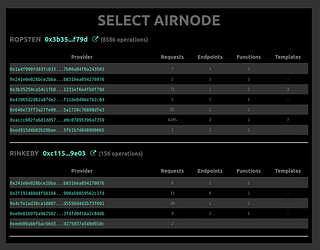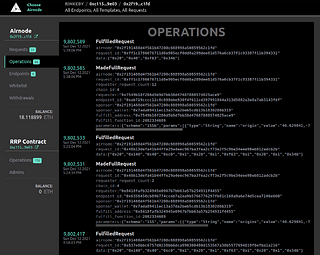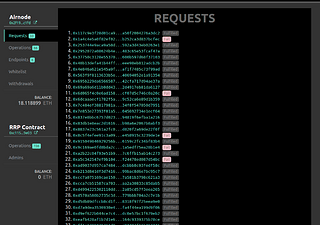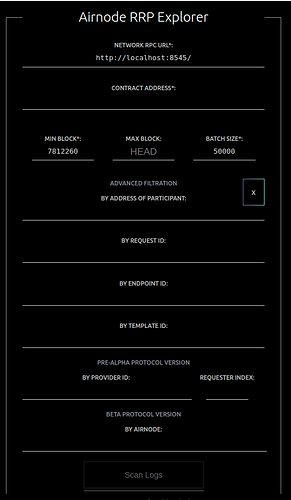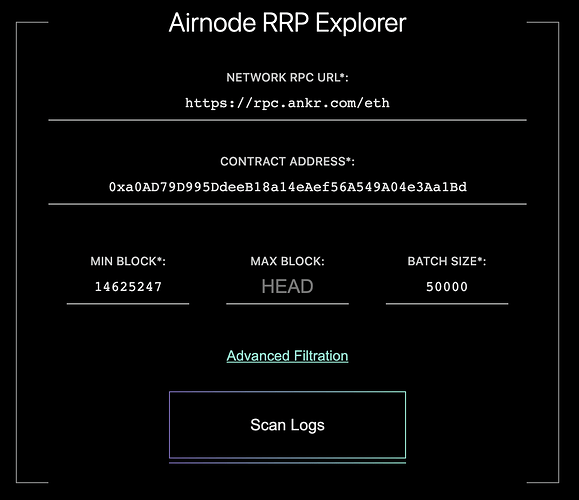During the last 3 months the team was busy preparing an independent Airnodes UI on-chain history explorer and manager - one more user interface which would be the alternative to future Chain API.
Just like our on-chain DAO tracker was revealing all events of the DAO, this tool was supposed to show the general picture about all known Airnodes activity, reveling some visuals for DAO participants not willing to become etherscan researching experts.
Airnode UI
The primary goal of that tool is have a track of all Airnodes activity, which is being recorded on EVM-compatible chains in so called Request-Response Protocol (RRP) contracts. By watching every event in such smart contract the tool is keeps building the history of every interaction with its Airnodes.
The link to the demo version is finally released and available for beta testing:
A few screenshots to grab your attention:
The stack of technologies that was used for the tool consists of Rust as the server side language, ReactJS for rich client interface and RocksDB for the storage.
- Only active known RRP contracts are presented on the demo website.
- There is no Ethereum main net usage of airnodes yet.
Looking at activity of the core team on Github, we are excited to see the 1.0 protocol is coming soon. At this moment our UI supports only established protocols versions: 0.3, 0.2 and prealpha.
RRP Explorer
Since the initial announcement RRP explorer tool was improved and includes much more parameters, allowing Airnode integrators to research their RRP contracts with more filtering arguments
But the main feedback we received from it was that using its CLI version remains much more convenient. airnode-rrp-log can be installed using cargo:
Whats next
At this point we would like to collect the feedback about existing tools, improve their security and robustness before management operations will be safe enough to be recommended.
We will be waiting for Chain API and the possibilities to make that tool better by integrating with it.
And we are eager to see 1.0 version of protocol and its usage to adjust our libraries and tools with it (historically we are around 1 month behind the core team releases)
Any kind of found issues, questions, proposals or any other type of feedback is welcome in the Github of the project or on this forum.
We would like to thank everyone who supported this initiative and made this milestone possible.
